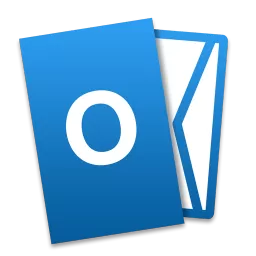Microsoft Office 2010 Features
Office 2010 is a suite of office software released by Microsoft in 2010. It not only kept the core Office features but also made a number of improvements to the interface, collaboration, and web capabilities. For many people, it was the bridging version that moved Office from the desktop era into cloud collaboration.
Here are the features and main functions that were hyped back in the day, and were actually useful:
- Backstage View (File → tab mode) — brought together stuff like save, version management, document properties, compatibility check into one central place.
- Customizable Ribbon — you could add, remove, or rearrange tabs yourself.
- Office Web Apps support — you could use simplified versions of Word, Excel, PowerPoint, and OneNote right in your browser.
- Co-authoring / Collaborative editing — multiple people could share and edit documents at the same time (via SharePoint or Web Apps).
- Protected View — documents downloaded from the internet or email opened as read-only by default, to avoid macro viruses or other attacks.
- Paste Preview — just hover your mouse to see how different paste options would look.
- Screenshot / Screen clipping tool — had a built-in "Screen Clipping" tool to grab a part of your screen and pop it straight into a document.
- Built-in PDF export — could save documents directly to PDF format without needing any add-ons.
- Excel new stuff: Sparklines (those tiny charts), Slicers, better PivotTables, etc.
- PowerPoint / Word picture editing got better — remove background, artistic effects, crop to shape, etc.
- 64-bit version support — handled really big files or data-heavy documents better.
- Integration with SharePoint, OneDrive, Windows Live — made working between cloud and local easier.
Why You Might Still Consider It
Even though Office has moved on to much newer versions, I think Office 2010 is still worth mentioning. Looking back, here's why:
- Rock solid stability — runs much lighter on older PCs or virtual machines compared to the new versions.
- Features are good enough — for everyday documents, spreadsheets, and presentations, Office 2010 covers most people's needs just fine.
- Great compatibility — works on older Windows systems (XP, Vista, 7) and can still run on modern ones in compatibility mode.
- Easy to learn — the interface is pretty similar to Office 2007 and 2013, so lots of people find it familiar.
- Cost / licensing — compared to a subscription for Office 365, an old permanently licensed version can be cheaper in some situations (if you can still get a legit license, that is).
Hands-On Test Drive
I installed Office 2010 Professional on a Windows 10 machine (i5, 8 GB RAM) and tried a few things:
- Opening Word, Excel, PowerPoint: took about 2–3 seconds on average to get to the main screen.
- Opening a big 20 MB document full of pictures and tables: loaded in about 3-4 seconds.
- Excel felt snappy when adding PivotTables or Slicers; general operation felt quick enough.
- PowerPoint played slideshows with videos and animations smoothly, as long as you didn't stuff it with super high-bitrate video files.
- Co-authoring / Collaboration: when using SharePoint or Web Apps, there was sometimes a delay, and you might run into permission conflicts.
- Exporting to PDF: saving a Word doc as a PDF was fast, and it kept the formatting pretty well.
- Stability: used it for several days editing and switching files with almost no crashes. Did get a bit slow sometimes with complex add-ins or macros.
Overall, it's like an old veteran: not flashy, but dependable and steady.
The Good and The Bad
The Good:
- Familiar interface, has all the essential features and core modules.
- Easier on your system resources than modern versions, great for older hardware.
- Collaboration, web support, PDF export, screenshot tool—all built-in, no extra plugins needed.
- Works on a wide range of platforms, including older systems.
The Bad:
- Official support ended (October 13, 2020). No more security updates.
- Missing modern cloud features, real-time co-authoring, AI helpers, and all that new tech.
- Might struggle with absolutely massive files, huge presentations, or heavy multimedia work.
- Lots of new plugins and extensions are made for newer Office versions and might not work with this one.
- While there's a 64-bit version, the 32-bit one on old systems can hit memory or performance limits.
How It Stacks Up Against Alternatives
Here's a quick look at some common office suites compared to Office 2010:
| Software | Ease of Use | UI Style | Size / Resource Use | Cost / License | Key Points / Downsides |
|---|---|---|---|---|---|
| Microsoft Office 2010 | Medium | Ribbon + Backstage | Medium | One-time purchase (historically) | Stable, great compatibility, no subscription; lacks modern cloud/AI features. |
| Microsoft Office 365 / Microsoft 365 | Medium-High | Modern / Adaptive UI | Heavier | Subscription | Strong on real-time collaboration, cloud, AI; expensive subscription. |
| LibreOffice | Medium | Traditional menus / some Ribbon | Light/Medium | Free / Open Source | Free and open source; can have document format compatibility issues. |
| WPS Office | Low-Medium | Office-like | Light | Free + Paid for extra features | Good compatibility, UI feels like Office; some advanced features need payment. |
| Google Workspace (Docs, Sheets, Slides) | Low | Simple web UI | Very Light (browser) | Subscription / Free basic version | Super easy collaboration, seamless cloud; limited offline use and advanced formatting. |
What People Are Saying
- "I still use Office 2010 on an older laptop. It doesn't slow down and handles my reports just fine."
- "Moved to 365 now, but every time I go back to 2010 I feel nostalgia — no subscription pressure, familiar interface."
- "I worry about security since support ended, but for offline document editing it's still reliable."
- "Many new add-ins and templates don't support 2010, which often limits me when I need new features."
- "The collaboration feature is okay, but it's not real-time, you sometimes have to manually merge conflicts."
System & Language Support
Here's what you need to run Office 2010:
- Operating Systems: Windows XP SP3, Vista SP1 or later, Windows 7, 8, 10 (can run in compatibility mode).
- Architecture: Both 32-bit and 64-bit versions available (this was the first Office to introduce a 64-bit version).
- Languages: Includes English, Simplified Chinese, Traditional Chinese, French, German, Spanish, and many other localized versions.
Licensing / Price
Office 2010 used a one-time, permanent license (retail or volume licensing). You bought it once and could use it on that PC pretty much forever, no subscription fees. Microsoft has since moved mostly to subscriptions and doesn't sell it officially anymore.
Is It Open Source?
Nope. Office 2010 is Microsoft's proprietary software, not open source.
FAQ (Frequently Asked Questions)
- Is there a Mac version of Office 2010?
There was Office 2011 for Mac around that time, but Office 2010 itself was mainly for Windows. Mac users looking for similar features should check out Office for Mac versions. - Can I still get official updates or patches?
No. Microsoft stopped support for Office 2010 on October 13, 2020. That means no more security updates or tech help. - Can Office 2010 be installed on Windows 11?
You can try installing/running it in compatibility mode, but some features or add-ins might not work right. - Is there a free upgrade to a newer Office version?
There were upgrade paths back in the day, but it's been off the market for ages. These days, you typically need to get a subscription or buy a new version. - What was Office Starter 2010?
That was a lightweight version Microsoft put on new PCs. It only had Word Starter and Excel Starter, with limited features and ads. - Can Office 2010 open modern file formats (.docx, .xlsx, .pptx)?
Yes. Office 2010 supports these formats natively. Its backward compatibility is better than older versions.
Final Thoughts
Office 2010 is a classic, reliable office suite. It was the key version that started bridging traditional desktop work with cloud and collaboration. Even though you'd miss out on the latest cloud, AI, and real-time collaboration stuff today, it can still be a decent choice if you're tight on resources, need maximum stability, or compatibility is your top priority.
If you want the latest features and seamless cloud collaboration, moving to Office 365 / Microsoft 365 is pretty much the way to go. But if you need an offline, efficient, stable, and familiar office environment, Office 2010 still holds its own and has a certain charm.
What Got Updated
- Service Pack 1: Better stability, fixed compatibility issues, performance tweaks.
- Service Pack 2: Wider compatibility, improved charts and data handling performance.
- Various security and update patches (released regularly during the support period).
- Adjustments and fixes for Web Apps and Office Starter.
- Interface and compatibility optimizations (especially for better performance on new systems and drivers).



